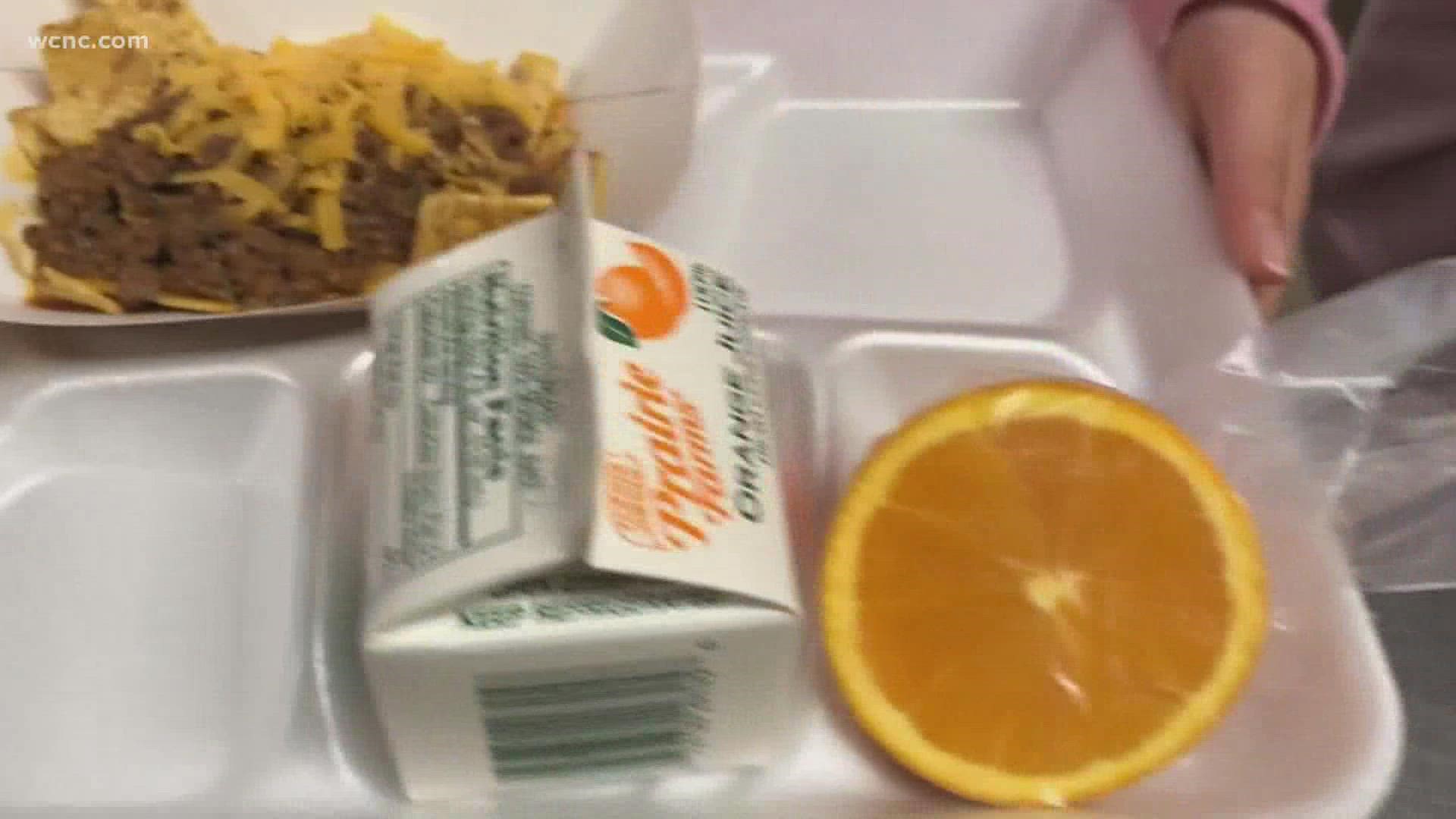CHARLOTTE, N.C. — Supply chain disruptions have impacted everything from lumber to car chips to ketchup packets this year, but it’s also hitting an unlikely place – schools.
School districts across the country have reported they haven’t always been receiving their entire food shipments to feed students. It's an issue being reported across the Carolinas.
“Sometimes we don’t know when an item is going to be short until it's time to receive it," said Tracy Dixon, the Richland One Director of Nutrition in Richland County, South Carolina. “One of the things we have to quickly do is modify the menu."
Lancaster County school officials have reported they’ve been dealing with food shortages and outages since the school year started. Officials say it has led to food substitutions, menu changes, and limits to the number of entrees offered to middle and high school students.
"It’s very concerning to me,” Will Adams, the CEO of the organization Team TruBlue, said. “If a child is hungry, they're not going to be focused on learning.”
Adams, who works with Charlotte-Mecklenburg Schools students, tells WCNC Charlotte students have reported similar shortage issues.
"We’re actually hearing that some of the schools are starting to scale back the portions they give the child because they want to make sure there’s enough for every child to have lunch," Adams said.
CMS officials said they have been dealing with paper supply shortages and minimal food outages that have required menu adjustments, but have worked to ensure students still have a proper portion of food.
Now, the USDA is stepping in to help mitigate the food and labor supply chain issues. The department has announced they’ll be giving up to $1.5 billion specifically for school nutrition professionals.
“Since the start of the public health crisis, school nutrition professionals have worked tirelessly to continue to serve nutritious meals," Agriculture Secretary Tom Vilsack said. "USDA has remained steadfast in its commitment to getting them the support they need to successfully operate meal programs amidst changing circumstances."
The money is part of a $3 billion comprehensive plan that will support drought resilience and response, animal disease prevention, market disruption relief, along with the purchase of food for school nutrition programs.
“American agriculture currently faces unprecedented challenges on multiple fronts,” Vilsack said. “The coronavirus pandemic has impacted every stage of our food supply chain, from commodity production through processing and delivery. Farmers, ranchers and forest landowners increasingly experience the impacts of climate change as severe storms, floods, drought and wildfire events damage their operations and impact their livelihoods. We know these challenges will continue into 2022, and others may emerge. Tackling these challenges head-on better positions USDA to respond in the future as new challenges emerge.”
Adams said solving this issue is crucial.
"When a child is hungry, they’re going to do what they have to do to try to get food, and sometimes they’ll result to violence," Adams said.
Contact Lana Harris at lharris@wcnc.com and follow her on Facebook, Twitter and on Instagram.

